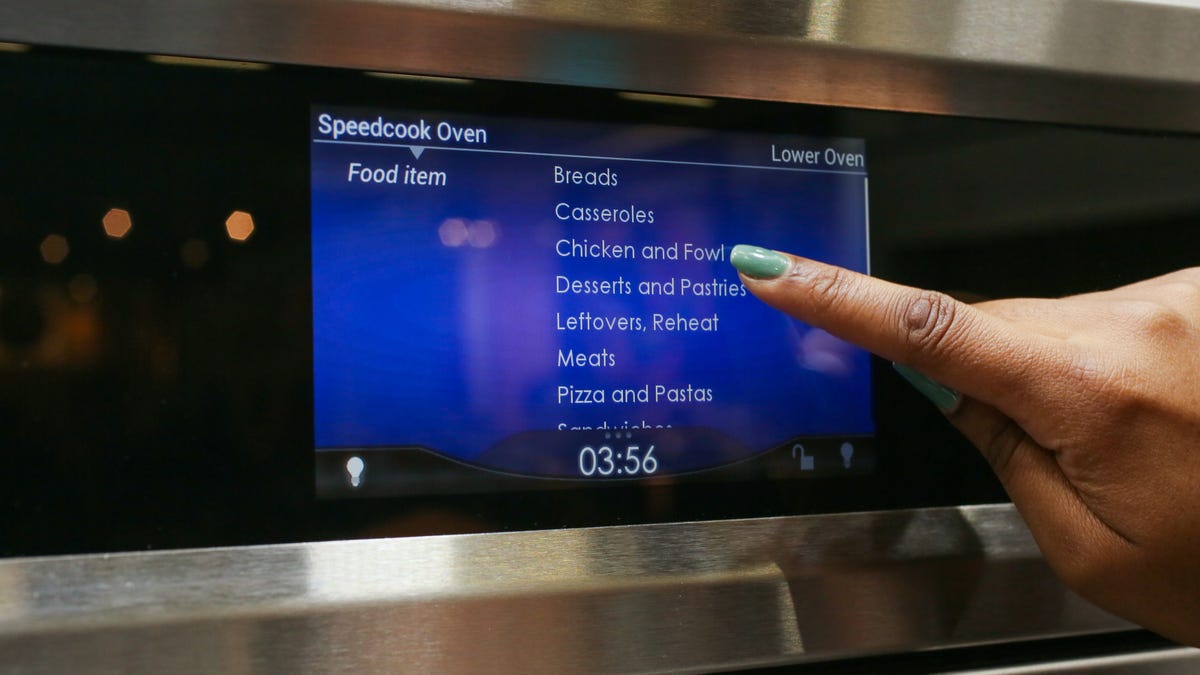Luxury design show reveals what's next in kitchen appliances
The high-end appliances on display at the Architectural Digest Design Show in New York City gave us a peek at the technology and features we should expect from more mainstream brands in the future.

I had to get past the high-backed pink velvet chair, dining room table with a built-in fire pit and nautical-inspired lighting to find the value of the Architectural Digest Design Show when it came to home appliances. This interior design show, which took place in New York City this weekend, is mostly focused on how the other half decorates their homes, which isn't much of a surprise when you consider that the design-centric magazine Architectural Digest has hosted the event for 15 years.
But the show also provided an aspirational and predictive look at high-end appliances and the designer kitchens in which they take center stage. These luxury-brand kitchen appliances had lust-worthy technologies and details that I expect will eventually trickle down to more mainstream large appliances. Let's take a look at some of the trends on display at the Architectural Digest Design Show:
Built-in cooking guides
The Viking TurboChef Speedcook Oven includes a touchscreen display that asks you for information about what you're cooking to adjust cook settings accordingly.
Digital control panels were the norm for electric wall ovens and ranges at the show, and we've seen similar controls in the CNET Appliances lab. But guided cooking tutorials built into these touchscreen displays made premium (read: expensive) brands such as Dacor, Viking, Jenn-Air and Wolf stand out from the lower-cost options I've reviewed.
Many of these ovens featured some sort of chef assistant in which you select what you're cooking from a menu (the choices are very specific, from size and desired doneness of your meat to and type of pan in which you're cooking), and the oven recommends the ideal setting for the dish.
Tech companies have started putting similar tools into smaller appliances; the makers of the June Intelligent Oven say the camera in this countertop device will recognize your food and cook it automatically, while the Tovala Smart Oven will scan a bar code to identify dishes from the company's food-delivery service and prepare it accordingly. But we're still waiting for this instructional technology to make its way into more affordable appliances.
Steam
The addition of steam can add back into your food while you bake. We've seen mainstream brands embrace steam as an accessory to cooking -- KitchenAid includes a moisture rack in some of its ranges that lets you add water to a shallow pan to create steam during baking. But some companies at the Architectural Digest Design Show added components to ranges and wall ovens to make steam an integral part of your cooking.
Built-in products such as Sharp's SuperSteam+ and the Miele PureLine SensorTronic Steam Oven use steam as a primary means of cooking food, and you can them as a replacement for you microwave. Steam components have also been tucked into the bodies of ranges. Capital Appliances displayed a range in its Connoisseurian line that includes a reservoir in which you put water that is released as steam during baking. And some models in Miele's latest line of ranges can be connected to your home's plumbing to enable a steam burst feature.
Personalization
This range from Big Chill was one of many colorful appliance options on display at the Architectural Digest Design Show.
Black, white and stainless steel are the basic finish options when you buy kitchen appliances at big-box retailers. Not so for high-end brands. Color swatches accompanied cooking specs at some manufacturers' booths, such as BlueStar, Smeg and Big Chill. You might not be able to run out to Best Buy any time soon and buy a mint-green refrigerator, but the rainbow of colors on display this weekend show a desire from consumers for something more interesting than run-of-the-mill stainless steel.
Limited connectivity
Smart large appliances still aren't commonplace in the average kitchen, and that trend held true at the Architectural Digest Design Show. Though manufacturers included cooking guides on ovens and ranges, most companies decided to forgo the ability to use those guides on connected apps. There were exceptions -- Jenn-Air announced at the show that its connected wall oven will work with Nest beginning this summer, and Dacor displayed a range with Wi-Fi and a built-in tablet from its Discovery IQ line.
The lack of connectivity on display showed that appliance companies are still trying to figure out how to hook up the kitchen to the rest of the smart home and if an app-controlled appliance is something in which consumers will invest. But the companies that are investing in connected tech are ambitious, which could bode well for the average consumer who wants a fully connected smart home.

